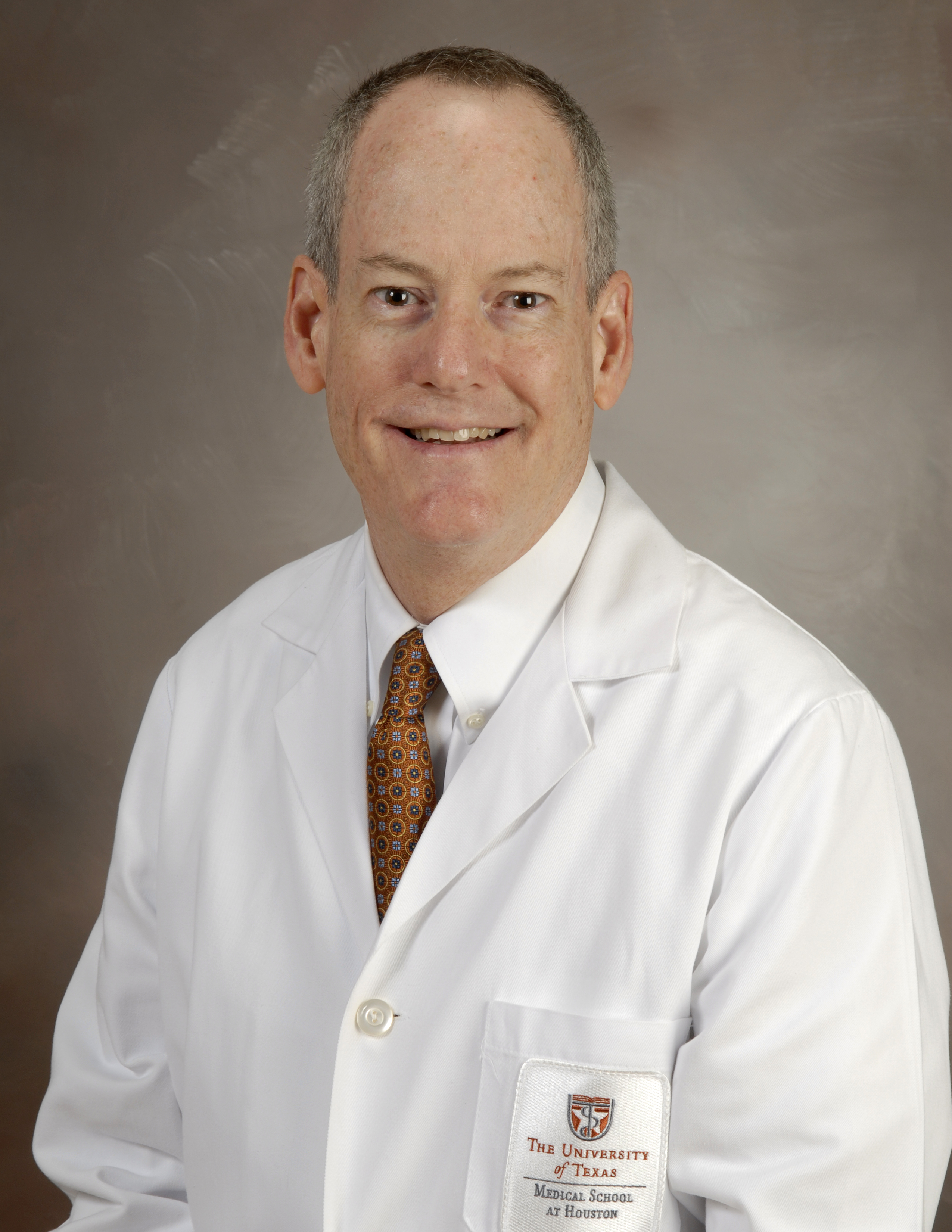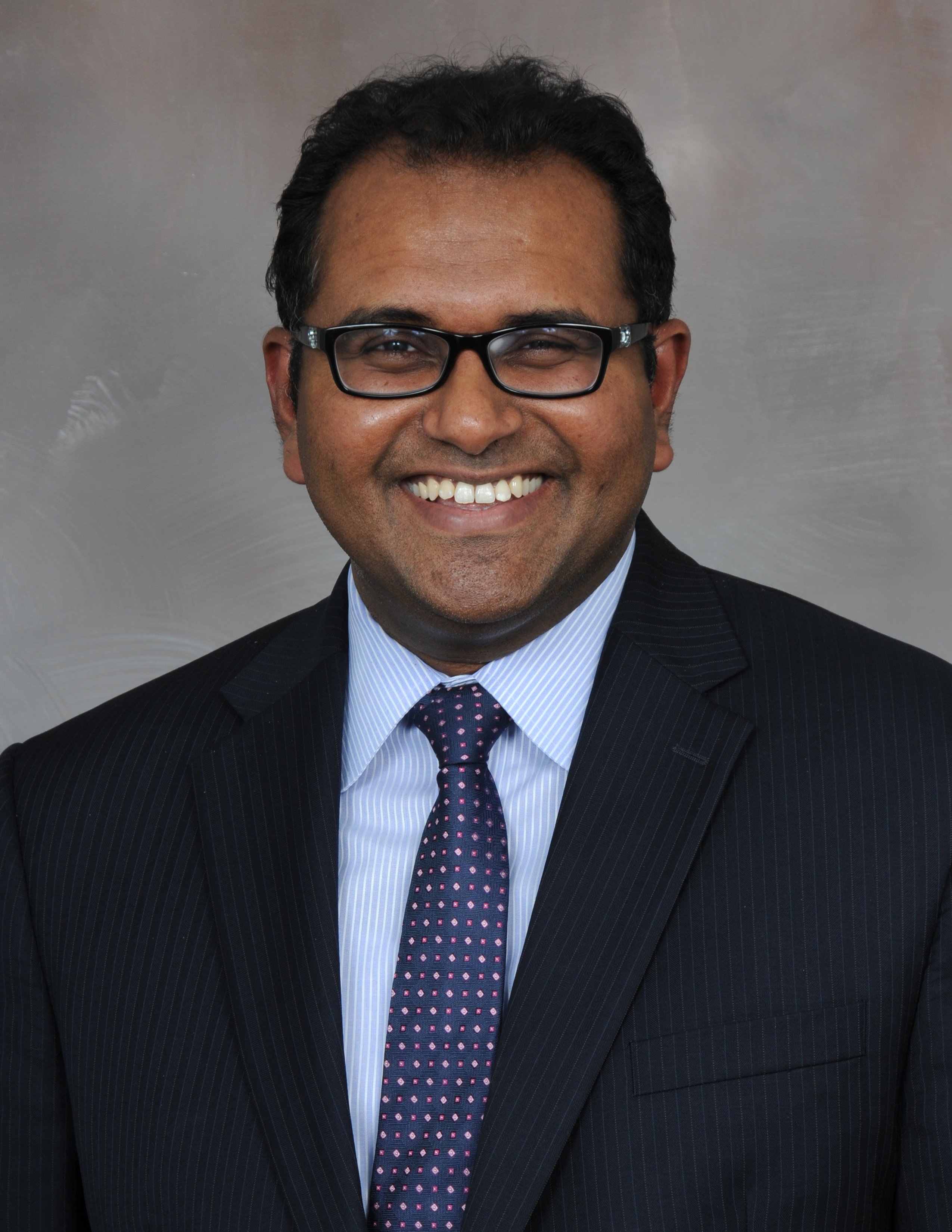Riggs, John appointed as directors of learning environment

Photo by Dwight C. Andrews/The University of Texas Medical School at Houston Office of Communications
Dr. John Riggs – Ob/GYN
In order to continue the development of a culture of teaching and learning rooted in respect and mutual dignity for all, McGovern Medical School has appointed John Riggs, MD, and Vineeth John, MD, MBA to a new position of directors of learning environment.
As the inaugural directors of learning environment, Riggs and John, who serve as professors in the Department of Psychiatry and Behavioral Sciences and the Department of Obstetrics, Gynecology and Reproductive Sciences, respectively, will oversee the educational surroundings of McGovern Medical School, Lyndon B. Johnson Hospital, and Memorial Hermann Hospital in order to make professionalism a top priority for every department.
The pair have set a goal to uphold aspects of a positive and vibrant learning environment by creating opportunities to promote and encourage professionalism amongst all of their colleagues.

Vineeth John, MD, MBA
“This role provides significant potential to define ourselves and what we stand for,” John said. “We find ourselves at the interface of the interests of the students, which is our predominant responsibility, and those of the faculty who are providing instruction and the educational and hospital leadership responsible for providing the structure and framework for how the students are learning in medical school.”
The two aspire to be easily visible and immediately accessible to medical students in order to develop into an unbiased and neutral source for support and feedback if they have concerns about the learning environment. They also hope to connect students to hospital leadership to ensure not only professionalism in the classroom but also in the workplace.
“The medical school has a lot of competing demands for each faculty member and resident,” Riggs said. “There are countless ways in which they are being held to be productive members of the medical school, and that doesn’t always involve developing medical students. That’s one big challenge: to understand how we can help individuals or departments weave medical education in with all their existing demands and how to do it in a way that doesn’t detrimentally impact student learning environment. We feel better about our professional and private lives when we know we are contributing, and education is at the heart of what we’re here for.”
While their positions may be new, Riggs and John say they know there is already a solid foundation for promoting professionalism at McGovern Medical School. Groups such as the Student Committee on Professionalism and Ethics (SCoPE), and others keep professionalism and engagement at the forefront of the Medical School’s mission. The task for Riggs and John will be finding the best practices locally and nationally and instituting them campus-wide.
“Mistreatment of medical students completely undermines everything we stand for as far as building an environment of dignity and respect,” Riggs said. “We’re impressed with the amount of work that’s already in existence here at the medical school. Now we have to facilitate those sorts of supportive methods into the departments, faculty, and residents.
“We clearly recognize that we’re not the only people thinking this. Our medical school is filled with people who are deeply committed to outstanding development of students that are learning here. Our role is to understand all the ways in which the learning environment is being adapted and all the people who have key interests in improving this. We’ll try to pull together many of the varying ways that this idea is being worked on within the medical school.”
To identify those departments that implement the best practices, Riggs and John have gone straight to the source: the students. In studying student evaluations of faculty and residents, they have been able to identify some of the teaching styles that work best, and also pinpoint those that do not garner high praise.
“One thing we have noted from the reports we get from the clerkship directors is we have some amazing faculty members,” John said. “These faculty members get brought up by hundreds of medical students as positive role models. Focusing on those faculty may also inspire other people to see techniques and strategies that might work for them because while they all may be working under similar constraints, some are still able to make a remarkable, positive impact on the learners’ lives.”
In order to acknowledge the educators who are leaders in instilling professionalism in the learning environment, Riggs said he would like to see a system in place to acknowledge faculty who are identified as positive role models.
“We need to identify those with the best practices and make sure that if they’re being named, it’s not just being put in a basket somewhere and hidden, but it’s actually something that people are recognizing them for,” Riggs said. “We could take these names and publish them on a regular basis to let people know that we see what you’re doing, and that it’s great.”
However, Riggs said one of the main issues they will face, is that it’s not just medical school employees who will impact the learning environment. The staff of all the hospitals and the patients with whom the medical students interact daily will all impact learning environment.
“I recently approached the service chiefs at LBJ to let them know what this initiative is about,” Riggs said. “And I was immediately approached by a couple of faculty saying they would love to learn more about this and asking how they could help. Just by the fact that we’re communicating this and putting focus on it, we’re starting to find people who are interested in facilitating that sort of teaching and educational focus into the clinical units.”
In the coming months, the duo will continue towards a strategy to help facilitate an educational program targeted at improving the way faculty interacts and teaches medical students and they hope to encourage leaders to make positive learning environment as one of the top priorities for their respective department or division.